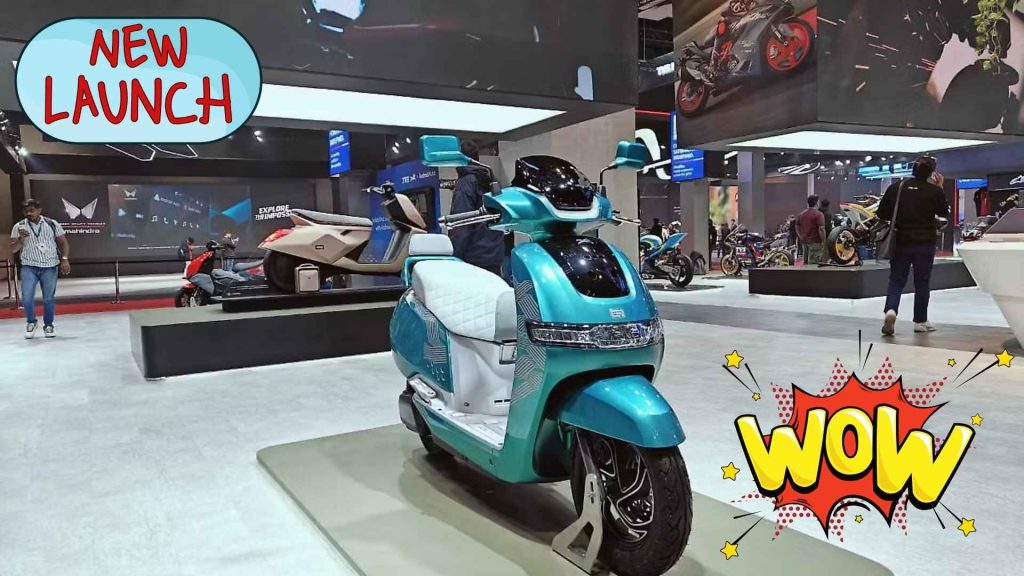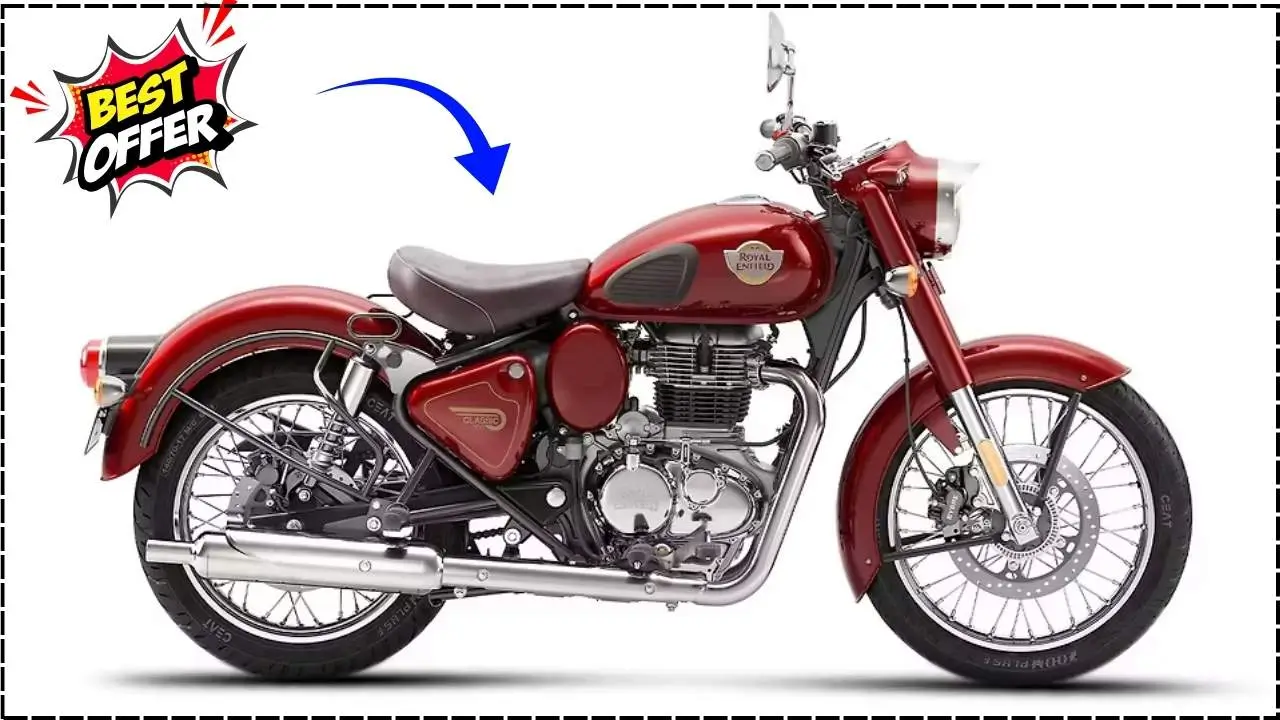Let’s dive right into the TVS iQube 2025 Launch – 1 Hour Charging & 520 KM Range! Worth the Hype? On paper, it seems like a groundbreaking leap—fast charging, extended range, and futuristic design. But when you break it down, the picture becomes more practical than miraculous. The 2025 update introduces larger battery packs (up to 5.3 kWh), real-world range figures of around 212 km, and meaningful improvements in technology and comfort. The “one-hour charging” headline, however, is more optimistic marketing than everyday reality. Charging from 0–80% takes roughly 4 hours 18 minutes, which is still quite reasonable for a scooter in this segment.

Table of Contents
TVS iQube 2025 Launch
| Variant / Feature | Battery Capacity | Claimed Range | Charging Time (0–80%) | Key Features |
|---|---|---|---|---|
| Base 2025 iQube (2.2 kWh) | 2.2 kWh | ~94 km | ~2 h 45 min | Entry-level, basic connectivity |
| Mid Variant (3.5 kWh) | 3.5 kWh | ~145 km | ~4 h | Improved range, modern styling |
| Top Variant iQube ST (5.3 kWh) | 5.3 kWh | ~212 km | ~4 h 18 min | Longest range, premium tech, 7-inch display |
So, is the TVS iQube 2025 Launch – 1 Hour Charging & 520 KM Range! Worth the Hype? The answer is yes—if you appreciate incremental innovation over empty promises. It’s not a fantasy machine but a well-rounded, thoroughly upgraded scooter that brings meaningful improvements in range, performance, and convenience. TVS continues to prove that it understands what Indian riders actually need: a smart, robust, and reliable electric commute.
Battery & Range Improvements
The 2025 iQube’s biggest upgrade lies in its battery options. With the top-tier 5.3 kWh pack, the scooter now offers an impressive 212 km of certified range. Even the mid-variant provides about 145 km, making it ideal for daily commutes without midweek charging anxiety. For riders used to older 100 km-range scooters, this is a welcome jump.
However, it’s important to keep expectations realistic. The so-called 520 km range floating around online isn’t the actual tested number. In real-world conditions—traffic, speed, load, and terrain—you’ll likely see 160–180 km on the larger pack, which is still excellent for urban and semi-urban rides.

Charging Time & Practical Use
Despite the “1 hour charging” tagline, full replenishment still takes time. The top-end iQube ST charges from 0–80% in about 4 hours 18 minutes using a standard home charger. Smaller battery variants charge faster, roughly within 2–3 hours. While that may not rival superfast EV charging yet, it fits perfectly into a daily routine—plug in overnight or during office hours, and you’re good to go.
TVS is reportedly working on expanding fast-charging infrastructure, which could reduce these times significantly in the near future. For now, home charging remains the most practical choice for most owners.
Features & Tech Upgrades
The 2025 iQube lineup brings several premium touches. The ST variant now boasts a large 7-inch touchscreen dashboard, Bluetooth connectivity, turn-by-turn navigation, voice assist, and over-the-air updates. You also get smartphone integration for real-time ride tracking and remote diagnostics. On the comfort side, the scooter features dual-tone seats, wider floorboards, and improved under-seat storage of up to 32 litres.
TVS has fine-tuned the ride dynamics too—offering smoother throttle response, better suspension tuning, and regenerative braking that feels more natural. These refinements make the iQube feel more mature and commuter-friendly than ever.
Price & Market Position
In 2025, the updated TVS iQube starts around ₹99,000 (ex-showroom) for the base variant, while the top-spec iQube ST crosses ₹1.4 lakh. That pricing places it squarely in competition with the Ather 450X, Ola S1 Pro, and Bajaj Chetak Premium. However, the iQube stands out with its balanced mix of performance, reliability, and practicality—making it a serious contender for anyone entering the EV scooter space.
Pros & Cons
Pros:
- Larger battery and extended range
- Smooth performance and refined ride quality
- Feature-rich interface and solid build quality
- Expanding charging network and trusted brand support
Cons:
- “1 hour charging” claim doesn’t match real-world specs
- “520 km range” is marketing exaggeration
- Top variant pricing may stretch budgets
- Still limited fast-charging infrastructure
Is It Worth the Hype?
The TVS iQube 2025 Launch isn’t about rewriting the EV rulebook—it’s about perfecting it. While it doesn’t yet deliver a 520 km miracle range or lightning-fast recharge, what it offers is reliability, smarter technology, and a tangible improvement over the previous generation. For daily urban commuting, it’s a dependable and future-ready option.
If you commute around 40–100 km a day, the new iQube fits seamlessly into your lifestyle. You won’t have to worry about charging every night, and you’ll enjoy a premium electric ride without range anxiety. For those who were waiting for a truly practical Indian EV scooter, this might finally be the moment.
TVS Radeon 110cc BS6 with 86km Mileage and Stylish Design: Bumper Deal at ₹45,999
FAQs About TVS iQube 2025
1. How much range does the 2025 TVS iQube offer?
The top 5.3 kWh variant offers up to 212 km of certified range, while the 3.5 kWh and 2.2 kWh variants deliver approximately 145 km and 94 km, respectively.
2. Can the 2025 TVS iQube fully charge in one hour?
Not yet. The fastest charging time currently available is around 4 hours 18 minutes for 0–80%. Fast-charging support may come in future versions.
3. What’s new in the 2025 TVS iQube?
The scooter now comes with upgraded battery packs, longer range, new design details, a 7-inch touchscreen display, and enhanced connectivity features.
4. Which variant should I choose for city commuting?
If your daily commute is under 50 km, the 3.5 kWh variant offers the best balance between price and range. For longer rides, the 5.3 kWh version is worth considering.
5. Is the 2025 TVS iQube a good value buy?
Yes. With its improved range, solid performance, and premium features, the iQube 2025 delivers great value for riders seeking an eco-friendly daily commuter without sacrificing comfort or reliabilit.















